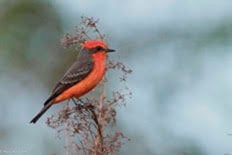A bird’s eye view: Nov. 14, 2015
Published 12:07 pm Tuesday, November 17, 2015
First let me say a hearty congratulations to Pat Spann, Martha Augood and Dan Torbert of Americus. They all saw Sumter County Bald Eagles; Pat on the Oct. 1 and Dan on Oct. 21. Pat was on Hooks Mill Road when he saw two adult Bald Eagles while Dan’s sighting was on Ga. Highway 377 at the entrance to Deerfield Plantation. All Martha had to do was step onto her porch to see the eagle pair. This event marked the first time in Pat Spann’s life he had ever seen our national bird.
The Audubon Christmas Bird Count will be held next month. I will join other volunteers, as I have for several years, to help conduct the Lake Blackshear count. Two teams will split up to tally every bird species seen as well as how many individual birds we find. The count circle is centered on the U.S. Highway 280 bridge and has a 7.5-mile radius. I will be assisting on the Sumter County side. If you are interested in volunteering, please contact me through the ATR for more details.
If any readers are still seeing hummingbirds visit their gardens or feeders, I would love to hear about it. Chances are it is not a Ruby-throated Hummingbird and could possibly be a western species.
Terry Tondee of Ellaville called on Oct. 29 to say he had located a Western Kingbird near Southeastern Pneumatics. Western Kingbirds, a flycatcher species, are rare for Georgia. Nice find, Terry!
Speaking of flycatchers, I drove to St. Mark’s National Wildlife Refuge, just south of Tallahassee, on Oct. 28. An adult, male, Vermilion Flycatcher had been located there recently and I hoped to see and photograph the bird. My dark-thirty arrival was just in time to witness a beautiful sunrise at the lighthouse. Later I headed to the location of the bird sighting and waited. Three warbler species — Yellow-rumped, Orange-crowned and Yellow — along with a female Vermilion Flycatcher were busy feeding. Overhead a magnificent Frigatebird cruised by. At one point I had five Bald Eagles in the field of view of my binocular. It was a great morning for birding in spite of the fact I left home at 4:30 a.m. and was so sleepy I had forgotten my wallet.
A tiny spot of red suddenly appeared in a distant palm tree. He sallied out for an insect, then returned to his perch like flycatchers do. The bird I had driven three hours to see and photograph was methodically making his feeding rounds. The Vermilion Flycatcher is found mostly in Arizona, New Mexico and West Texas as well as throughout Mexico and on into countries of South America. It is not unheard of to have Vermilion Flycatchers in Georgia during our winter months. Back in 2000, we had a gorgeous male in Sumter County near Lake Philema and was seen by many from Americus.
These few examples are what makes bird watching so much fun. It’s almost like a treasure hunt not knowing what may turn up. And the rarer the bird the greater the find.
Phil Hardy, a bird watcher and bird photographer, lives in Americus.




